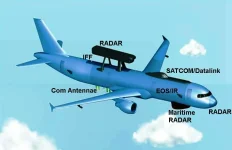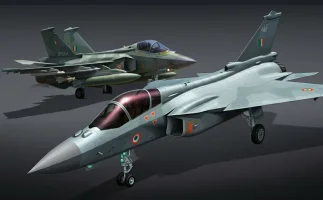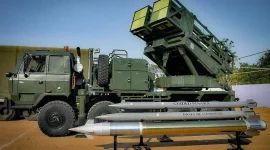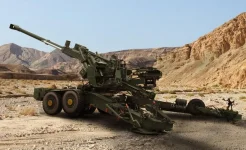- Views: 4K
- Replies: 10
India is making rapid advancements in next-generation warfare technology with an ambitious programme to develop a dozen distinct hypersonic missile systems.
Led by the Defence Research and Development Organisation (DRDO), this major initiative is set to establish a formidable hypersonic triad, enabling the armed forces to launch these ultra-high-speed weapons from land, air, and sea by the end of the decade.
This strategic push, featuring efforts like the secretive 'Project Vishnu', aims to place India in an elite group of nations—including the United States, Russia, and China—that possess operational hypersonic arsenals.
The successful test of a long-range hypersonic missile in November 2024 and recent breakthroughs in engine technology underscore the nation's progress in this critical defence frontier.
A New Class of Weaponry
Hypersonic weapons are systems that travel at speeds greater than Mach 5, or more than five times the speed of sound (approximately 6,200 km/h).Their immense speed, combined with their ability to fly at low altitudes and manoeuvre unpredictably, makes them exceptionally difficult for conventional air defence systems to detect and intercept.
This capability provides a decisive advantage in modern conflicts, allowing for rapid precision strikes against high-value targets.
DRDO's comprehensive programme is developing a range of systems tailored for the specific needs of the Indian Army, Navy, and Air Force. These include:
- Hypersonic Cruise Missiles (HCMs): These missiles are powered by advanced air-breathing scramjet engines, allowing them to sustain hypersonic speeds throughout their flight path for precision strikes. A leading example is the ET-LDHCM (Extended Trajectory-Long Duration Hypersonic Cruise Missile) under Project Vishnu, which is designed to have a range of up to 2,500 km and reach speeds of Mach 8.
- Hypersonic Glide Vehicles (HGVs): Launched from a rocket or ballistic missile, HGVs detach and glide towards their target at hypersonic speeds. A successful test of a Long-Range Anti-Ship Missile (LRAShM) in November 2024, with a 1,500 km range, featured an HGV that demonstrated advanced terminal manoeuvres to evade defences.
- BrahMos-II: This hypersonic version of the acclaimed BrahMos missile is being developed to achieve speeds of Mach 7-8 with a range of 1,500 km, intended for both anti-ship and land-attack missions.
- Versatile Launch Platforms: DRDO is also working on variants that can be launched from fighter jets like the Su-30 MKI and from submarines, which would significantly enhance India's second-strike capability from its underwater fleet.
- Anti-Hypersonic Defence: Alongside offensive systems, India is developing interceptor missiles capable of neutralising enemy hypersonic threats, building on its experience with its Ballistic Missile Defence (BMD) shield.
- Hypersonic Drones and Decoys: By saturating enemy radar systems, hypersonic drones and decoys work in tandem with offensive missiles to confuse and penetrate air defence networks.
Key Technological Breakthroughs
India's progress is built on significant domestic research and development.In a major milestone achieved in early 2025, DRDO successfully sustained combustion in a scramjet engine for over 1,000 seconds in ground tests. This is a critical requirement for long-range cruise missiles and a substantial improvement from the 22-23 second test of the Hypersonic Technology Demonstrator Vehicle (HSTDV) in 2020.
To overcome the immense heat generated at hypersonic speeds, DRDO laboratories have developed advanced thermal barrier coatings and specialised fuels.
Furthermore, India has established a robust testing infrastructure, including 12 hypersonic wind tunnels capable of simulating speeds up to Mach 13, which are essential for validating aerodynamic designs and propulsion systems.
Strategic Imperative and Future Timeline
The drive for hypersonic weapons is fuelled by the evolving security landscape in the region and globally. The deployment of systems like China's DF-17 HGV and Russia's 3M22 Zircon HCM has made it strategically necessary for India to develop its own deterrent capabilities.According to DRDO Chief Dr. Samir V. Kamat, the HGV programme is in an advanced stage, with potential induction into the armed forces within the next two to three years. The more complex HCM systems, such as the ET-LDHCM, are expected to be operational by 2030.
The successful LRAShM test in November 2024, described by Defence Minister Rajnath Singh as a "historic moment," confirmed India's entry into the exclusive club of nations with long-range hypersonic missile capabilities.
By continuing to build a versatile arsenal of hypersonic weapons and collaborating with private industry, India is on track to significantly strengthen its national defence and strategic deterrence posture for the future.





